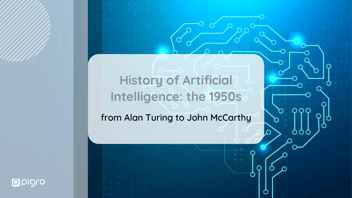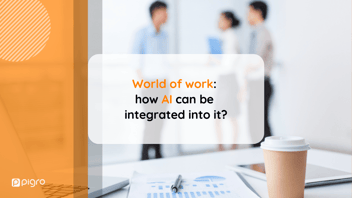Through this guide, you will learn about the groundbreaking advancements. You can also explore the diverse possibilities AI brings to the table. This is beneficial for creators, marketers, and media professionals alike.
From automating mundane tasks to generating creative and engaging content, AI technologies are not merely tools of convenience. Now, they have become catalysts for innovation.
Through this article, we explore various domains where AI is making strides.
That includes writing, graphic design, and video production. Read on to learn valuable insights into how AI shapes the future of content creation.
AI in Video Production and Editing: Transforming Moving Images
The applications of AI in video editing and production are endless. One example is how AI algorithms can analyze raw footage, select the best shots, and assemble a rough video.
That is what IBM’s Watson AI did, creating a movie trailer in just 24 hours. However, another fun application many utilize is changing the video format using AI.
The most entertaining means of communicating sometimes comes as a GIF. Hence, learning to convert MP4 to animated GIF allows you to animate a conversation. With this tool, you can use Messenger with GIF, creating an entertaining communication method.
Aside from utilizing the MP4 to GIF converter, AI is revolutionizing VFX. It does so by automating complex processing like rotoscoping.
Adobe’s Sensei AI, for instance, can help you with this process. Moreover, AI tools can now offer advanced colour correction, balancing colours, and adjusting for optimal visuals. Another great use of AI is its ability to recognize faces and objects. These tools allow for dynamic adjustments and effects. For example, AI algorithms can track an object or face with a 90-95% accuracy rate, significantly higher than manual methods.
AI in Writing and Editorial Processes: Revolutionizing Written Content
AI-generated content in writing is changing the way we create, edit, and refine our work. The examples are endless, but some prime examples are discussed below. We discuss examples beyond mere grammar and style checking.
Content generation and assistance
AI-driven writing assistants, like OpenAI’s GPT-3, help you generate articles, creative stories, and even technical papers. For instance, GPT-3 has 175 billion parameters and can produce content almost indistinguishable from human text. This saves people up to 50% of the time typically spent on such tasks.
Automated journalism
New organizations like The Washington Post and Reuters use AI to generate news articles automatically. The Washington Post’s AI technology, Heliograf, has produced various news reports. Through the Lynx Insight tool, Reuters uses AI to analyze data and suggest story ideas.
SEO optimization
Each content creator knows the importance of SEO optimization. Well, one of the best uses of AI is its ability to boost SEO rankings. Tools like MarketMuse use AI to analyze content and suggest improvements for better search engine rankings.
AI in Graphic Design and Visual Arts: Changing the Landscape of Visual Creativity
You can utilize these applications if you’re wondering how to use AI and its tools.
While they revolve around graphic design and visual arts, even amateurs can use them to learn and have fun.
AI algorithms can now generate new images and modify existing ones.
Tools like DeepArt and NVIDIA’s GauGAN allow you to create complex scenes and artworks from simple sketches or descriptions.
Moreover, AI-driven facial recognition and augmented technologies create interactive experiences in visual arts. Museums and galleries are using those to personalize tours and create interactive exhibits.
AI in Music Composition and Sound Design: The Rise of AI-Generated Music
Another excellent tool for AI content marketing is incorporating music and audio effects. Did you know that now, you can even use AI to generate new pieces of music? Well, some of the applications include:
- AI-driven music composition. OpenAI’s Jukebox and Google’s Magenta are creating pieces by learning from databases of existing music.
- Sound design and audio effects. Tools like Sony’s Flow Machines use AI to create unique sounds and music tracks.
- Personalization in music streaming. Spotify and Apple Music use AI to personalize playlists and recommend new music to users.
- Automated mastering services. Through services like LANDR, people can now master tracks automatically. Hence, AI has also reshaped the process of mastering music production.
Conclusion
Ultimately, AI’s role in content creation marks a transformative era in digital media. AI content optimization is at the heart of this revolution. This helps with efficiency, creativity, and expression.
AI is not just for automating tasks, from video production to writing, graphic design, and music composition. It is not a tool that redefines the boundaries of creativity and expression.
As AI evolves, its integration into creative processes highlights its potential as a catalyst for innovative and resonant content creation.
Find out more:
- ChatGPT: the future of AI to provide answers to employees?
- What is AI and how it can be integrated into the world of work
Do you want more information about Pigro? Contact us!



